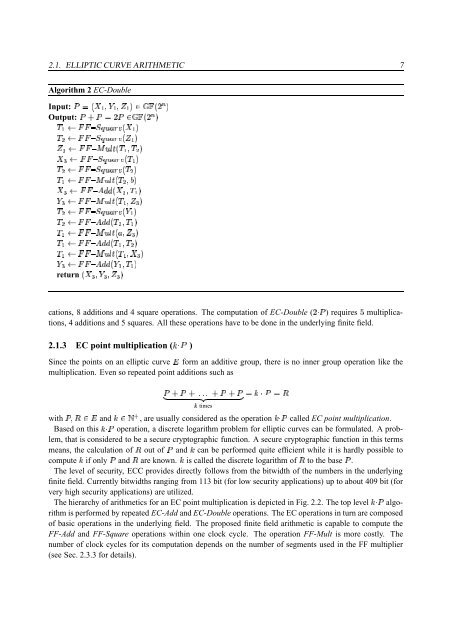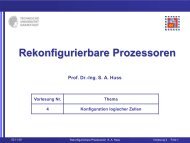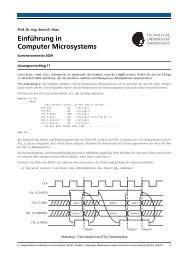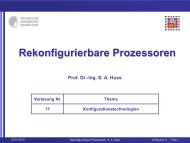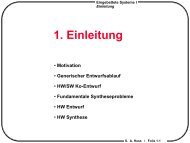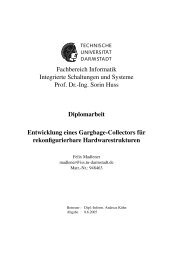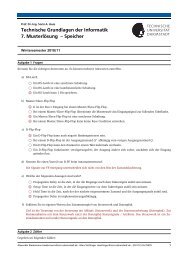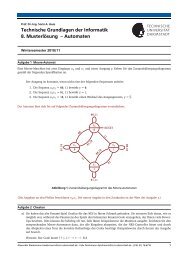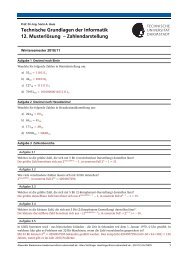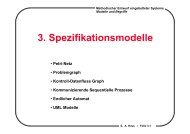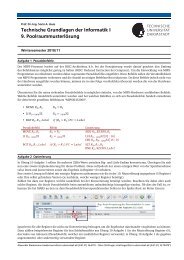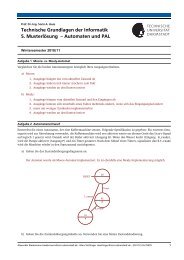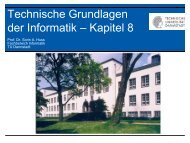FPGA based Hardware Accleration for Elliptic Curve Cryptography ...
FPGA based Hardware Accleration for Elliptic Curve Cryptography ...
FPGA based Hardware Accleration for Elliptic Curve Cryptography ...
You also want an ePaper? Increase the reach of your titles
YUMPU automatically turns print PDFs into web optimized ePapers that Google loves.
Ymonpn _ #qkr9;=stPKe'Y[ l<br />
l<br />
monpn _ #qkr9;=stPuiY[ 3<br />
3 monpn _ #qkr9;=stPl 3 l<br />
l<br />
monpn _ 2rxKyhl 3 @A> Y<br />
3 monpn _ #qkr9;=stPzf Y l<br />
l<br />
monpn _ vƒ{={ l 3 @ l Y l Ymonpn _ 2rxKyhz;9@Xi<br />
3<br />
l Ymonpn _ vƒ{={ l YS@ l 3 8<br />
l Ymonpn _ 2rxKyhl YZ@Ce 8 <br />
2.1. ELLIPTIC CURVE ARITHMETIC 7<br />
Algorithm 2 EC-Double<br />
Input:<br />
6 KeNYS@gfDYh@XijY[ E -k<br />
Output:Q)<<br />
6 ¦ E ¦.<br />
8 monpn _ 2rx~yl YZ@ l 3 <br />
e<br />
i<br />
m‚npn _ œqBr;Pst=l YX 8<br />
e 8 m‚npn _ v-{P{ Ke 8 @ l Y <br />
f 8 monpn _ 2rxKyhl Y @Xi 8 <br />
8 monpn _ vƒ{={ zf 8 @ l Y[<br />
returnKe<br />
f<br />
@gf 8 @Xi 8 8<br />
cations, 8 additions and 4 square operations. The computation of (4 EC-Double ) requires multiplications,<br />
4 additions and 5 squares. All these operations have to be done in the underlying finite field.<br />
2.1.3 EC point multiplication (žbŸ¡ )<br />
Since the points on an elliptic curve/<br />
<strong>for</strong>m an additive group, there is no inner group operation like the<br />
multiplication. Even so repeated point additions such as<br />
§Z 6 U 6<br />
Ë /<br />
and<br />
E'©ª<br />
, are usually considered as the operation called EC point multiplication.<br />
Based on this operation, a discrete logarithm problem <strong>for</strong> elliptic curves can be <strong>for</strong>mulated. A problem,<br />
that is considered to be a secure cryptographic function. A secure cryptographic function in this terms<br />
with@gU<br />
means, the ofU calculation of and out can be per<strong>for</strong>med quite efficient while it is hardly possible<br />
compute<br />
to<br />
only andU if known. are is called the discrete ofU logarithm to base the .<br />
The level of security, ECC provides directly follows from the bitwidth the numbers in the underlying<br />
finite field. Currently bitwidths ranging from 113 bit (<strong>for</strong> low security applications) up to about 409 bit (<strong>for</strong><br />
very high security applications) are utilized.<br />
The hierarchy of arithmetics <strong>for</strong> an EC point multiplication is depicted in Fig. 2.2. The level top algorithm<br />
is per<strong>for</strong>med by repeated EC-Add and EC-Double operations. The EC operations in turn are composed<br />
of basic operations in the underlying field. The proposed finite field arithmetic is capable to compute the<br />
FF-Add and FF-Square operations within one clock cycle. The operation FF-Mult is more costly. The<br />
number of clock cycles <strong>for</strong> its computation depends on the number of segments used in the FF multiplier<br />
(see Sec. 2.3.3 <strong>for</strong> details).<br />
¦<br />
times<br />
¢ £h¤ ¥ d),d)o\\\)


